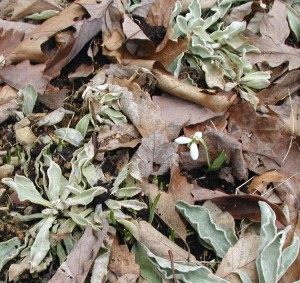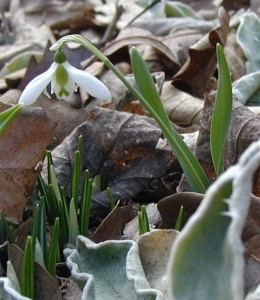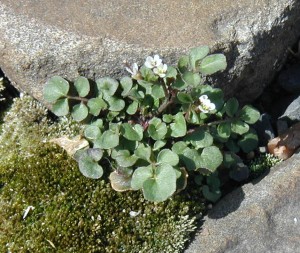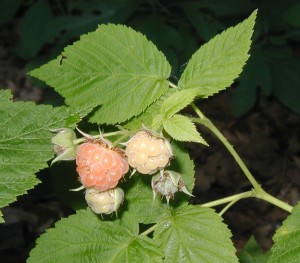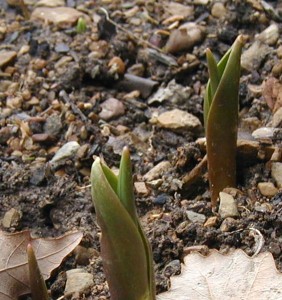In central Pennsylvania the elevation of the Appalachian Mountains delays the blooming times of many plants. Traveling around the Ridge and Valley Province you can see the mountain ridges look bare as the trees haven’t leafed out yet. They still have the brown and grey barren appearance of Winter. As the temperatures warm and the days get longer the trees will burst forth with their greenery.
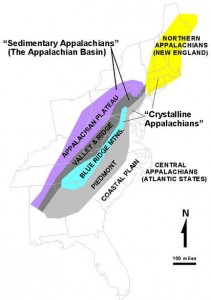
The trees are not yet leafing out on our ridge top, nor are they leafing out down in town near the Juniata River, which is more than three hundred feet lower in elevation. Soon, we’ll be able to see the trees in the valley leaf out and the trees on the mountain ridges will still be holding onto their winter buds. Over the next couple of weeks we’ll be able to see the progression of the trees awakening as their green colors rise up the mountains.
A short distance in longitude can make all the difference in the kinds of plants that are blooming in late March and early April. We took a weekend drive of a couple hundred miles and saw that we’re a bit behind in blooming compared to places south of us.
About 40 miles south we saw the redness of maple leaves developing but otherwise the landscape still appeared barren. Driving further south we saw forsythia in bloom as we crossed the state line into Maryland. In this region the daffodils or narcissus were already blooming.
By the time we got down to central Virginia, in the Piedmont Region, many of the spring-flowering ornamental and fruit trees were in bloom, including crabapples, pears and cherries. The redbuds along Route 64 were blooming, too. The first bloomers were already dropping petals and developing their leaves.
In flower beds the bulbs were showing their pretty colors along with moss phlox. A lone azalea bush was spotted in bloom, too. Henbit, dandelions, violets and purple dead nettle were some of the yard weeds blooming in the south, but not yet in the north.
There are no specific rules regarding the blooming times of plants. Each individual plant has several factors affecting its flowering time, including elevation, longitude, microhabitat, soil fertility, local weather and individual variation.
Microhabitat refers to the location of the plant and its surrounding cohorts. A plant in a shady or drier location may bloom later than a similar plant nearby that receives more sun or water. The soil fertility may dictate whether the plant blooms at all. Early Spring can be tumultuous with respect to weather, so if a cold front rolls in with a late snow the blooming of many plants may be delayed. Finally, each individual plant has a genetic makeup that dictates when it will bloom.
